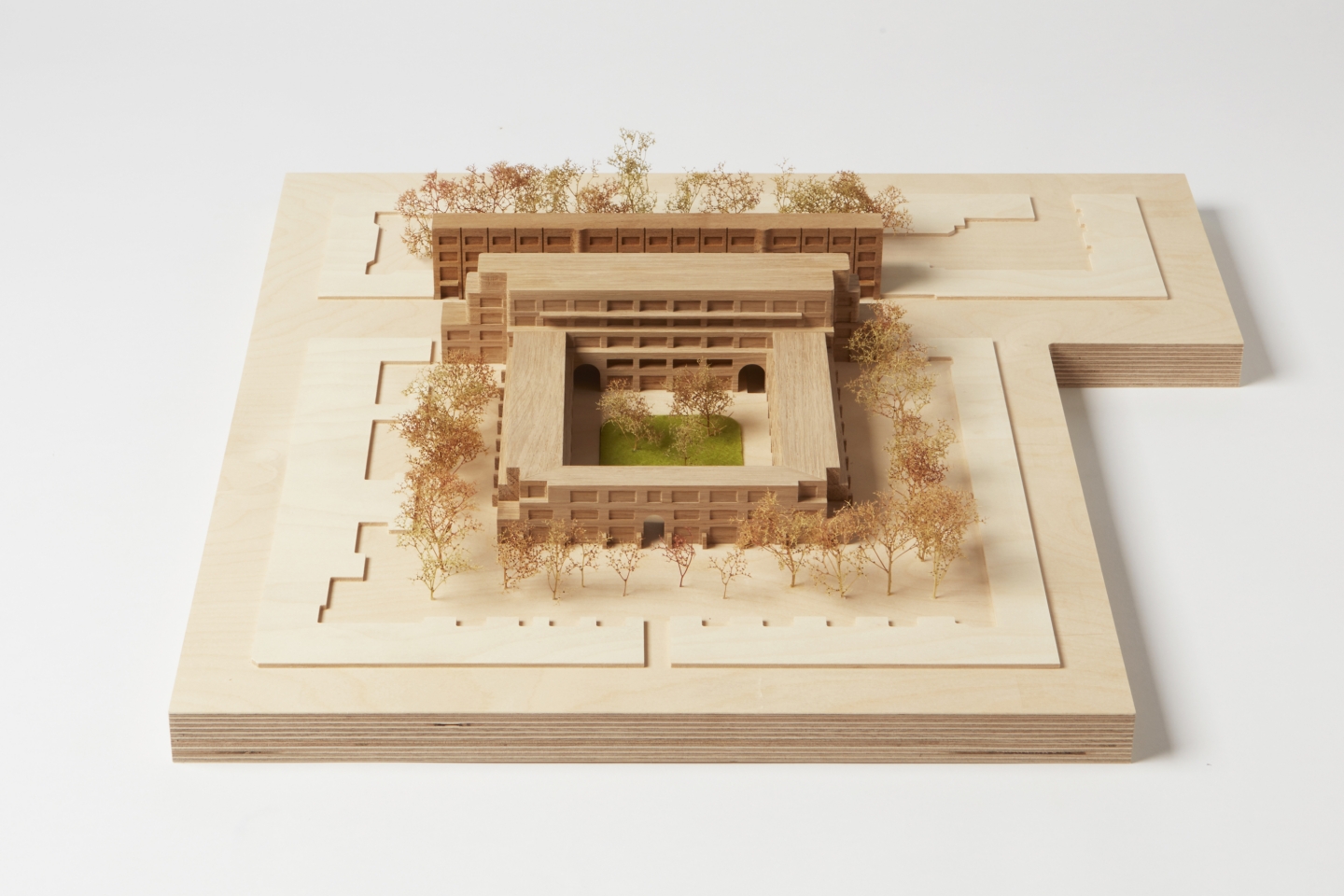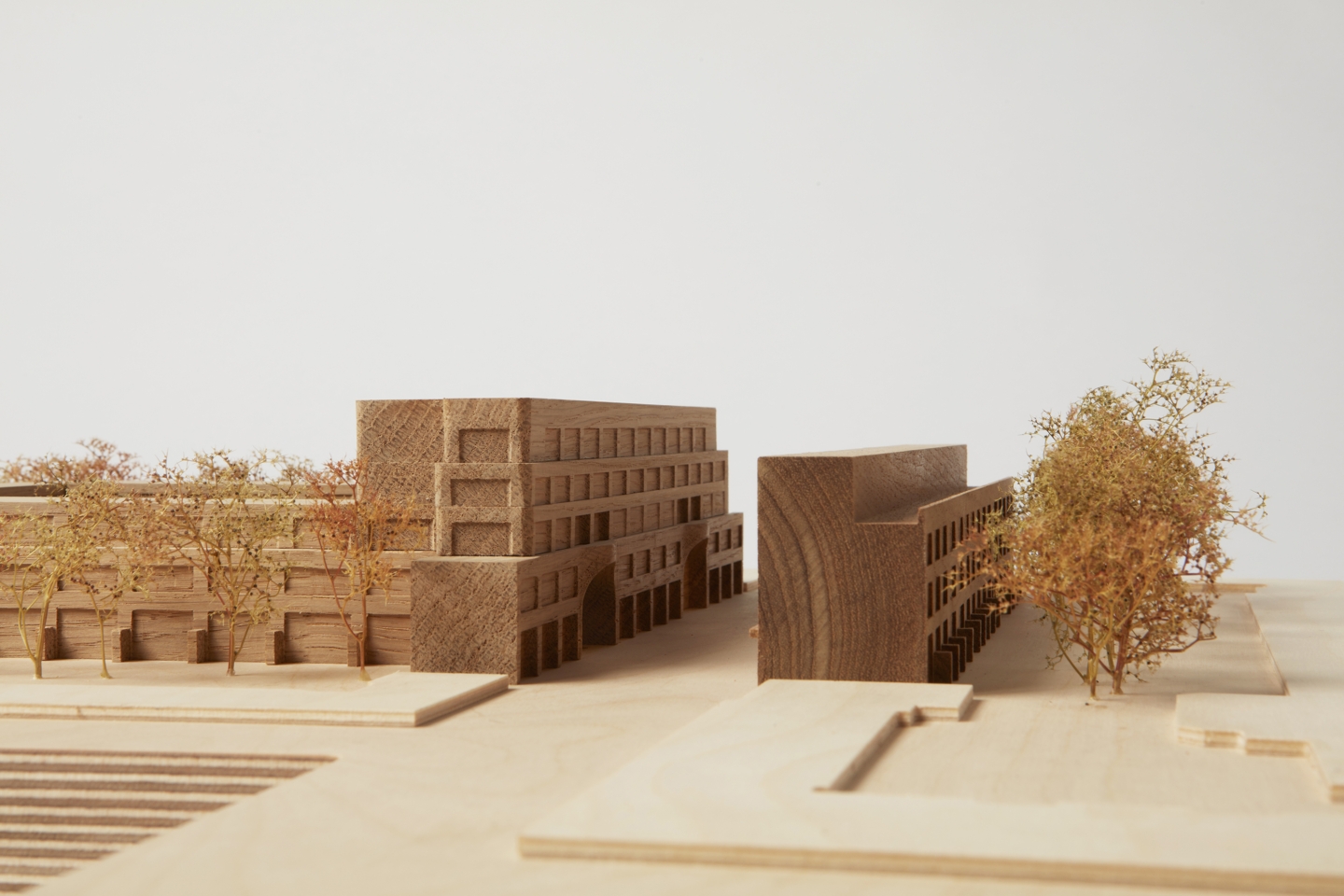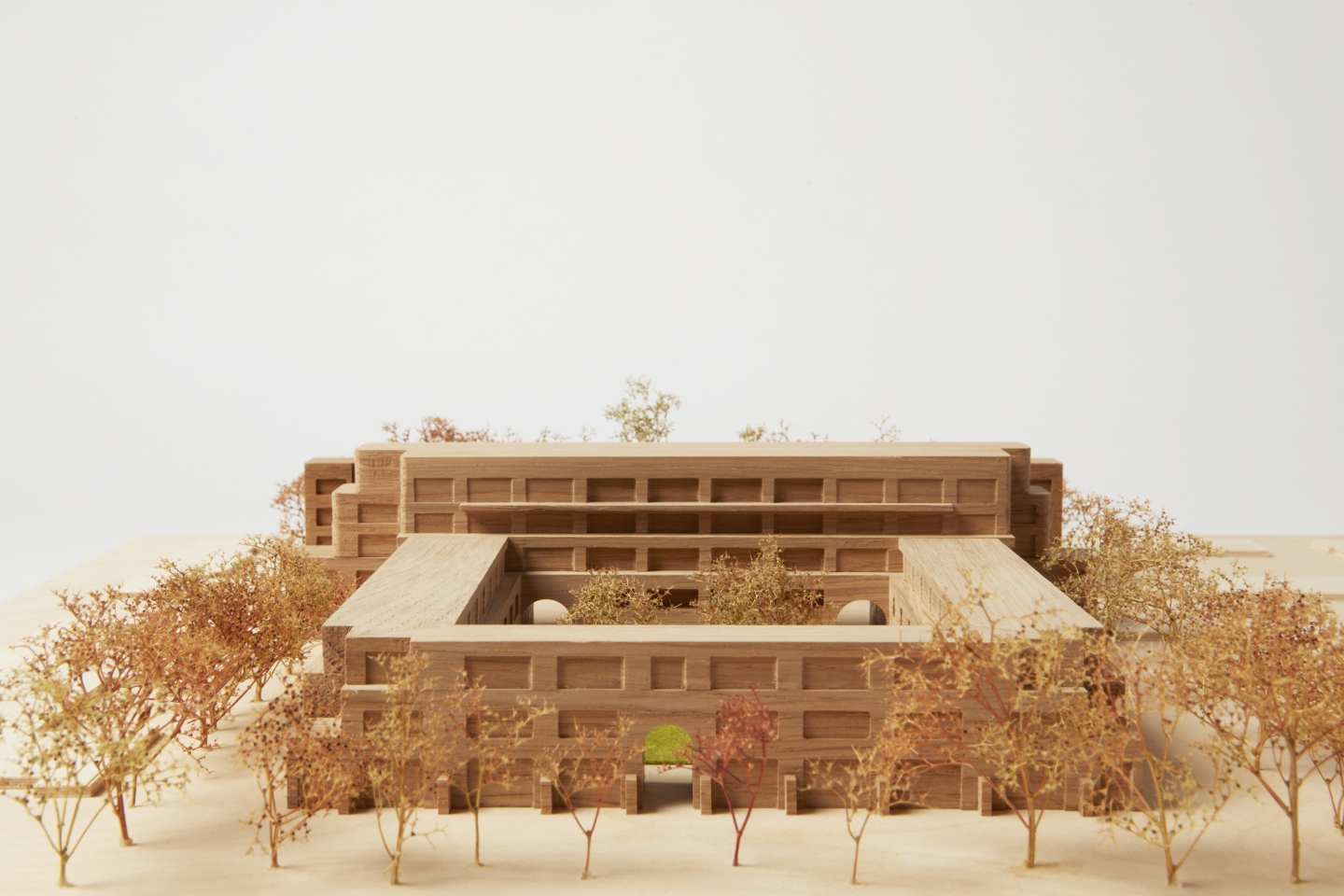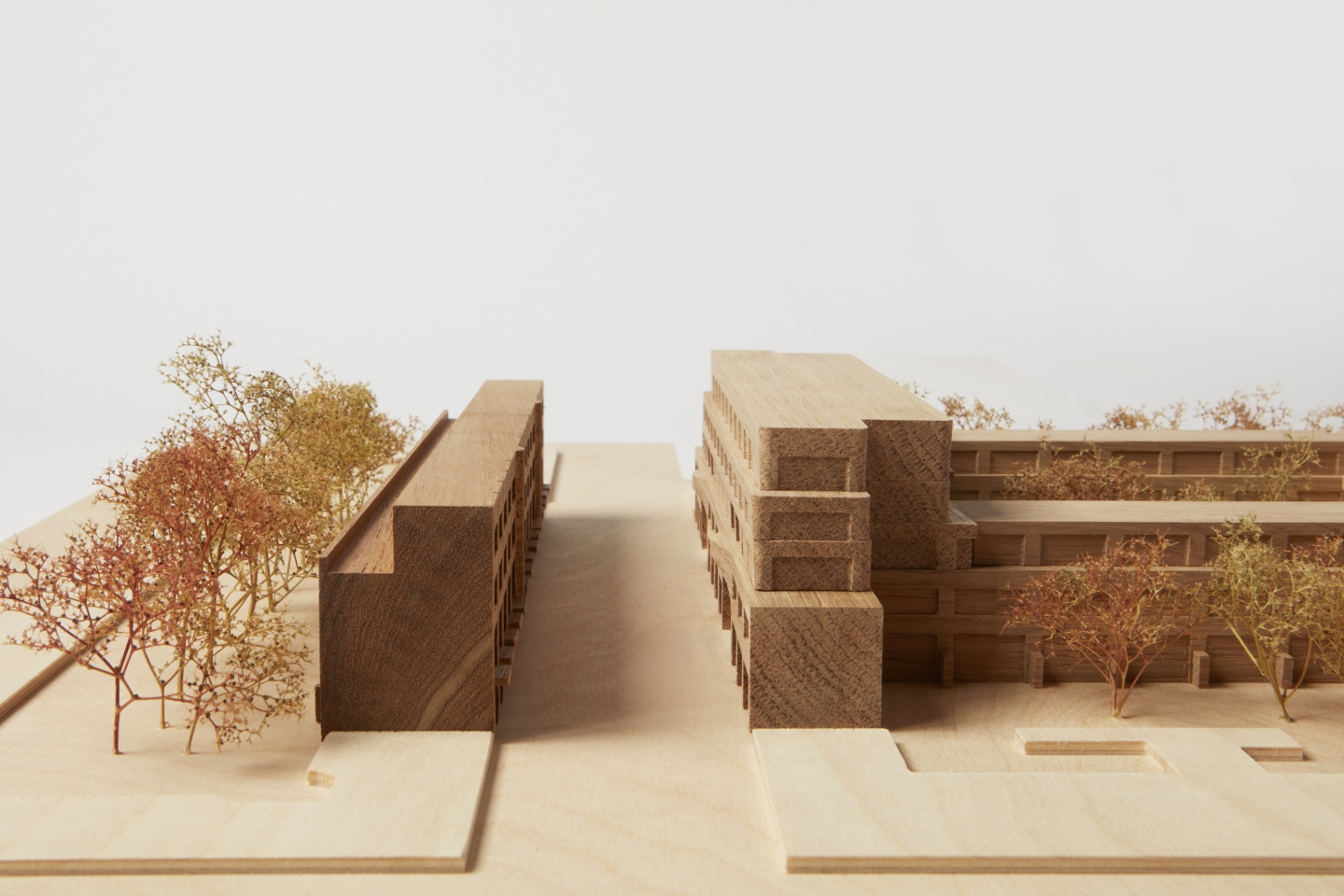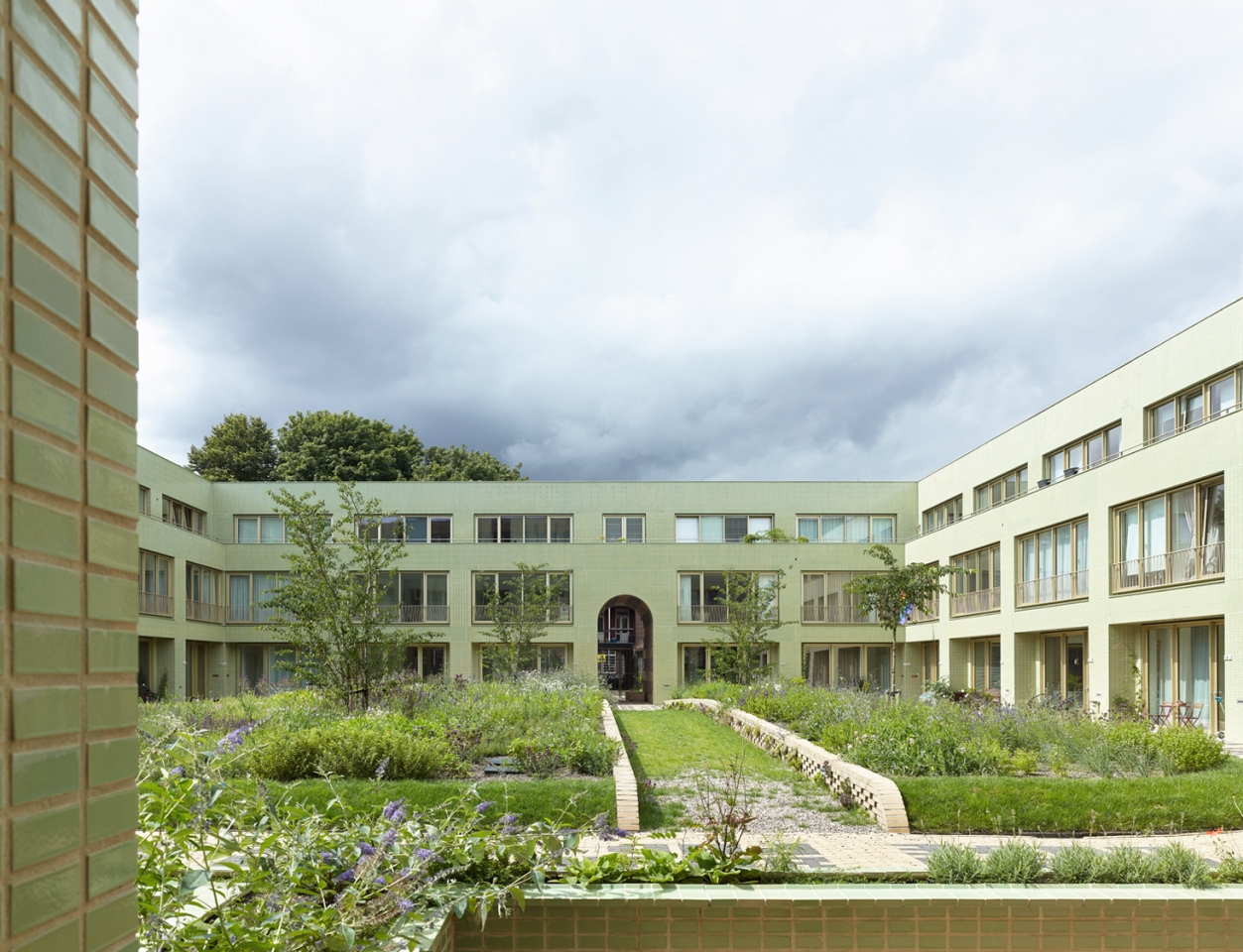
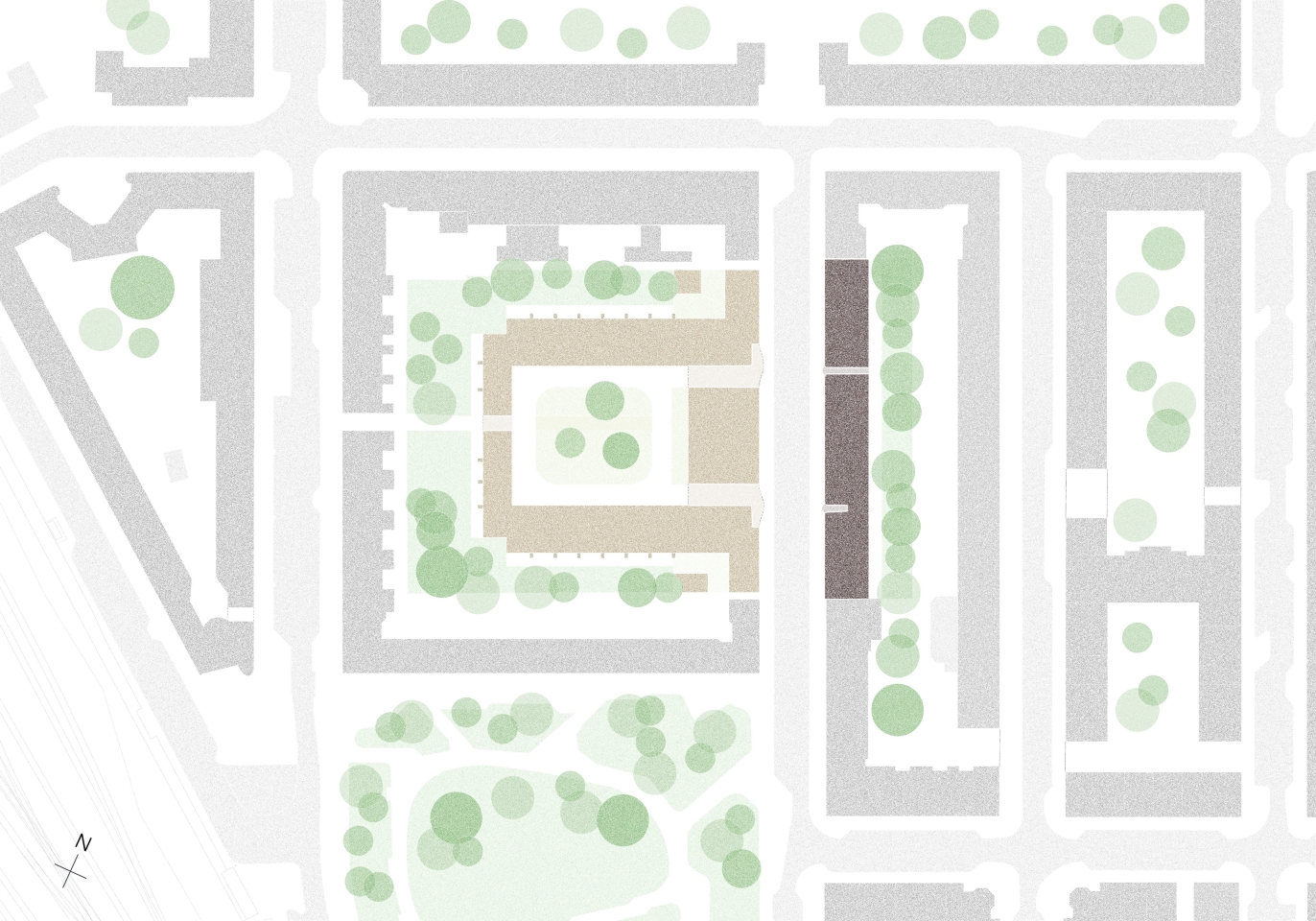
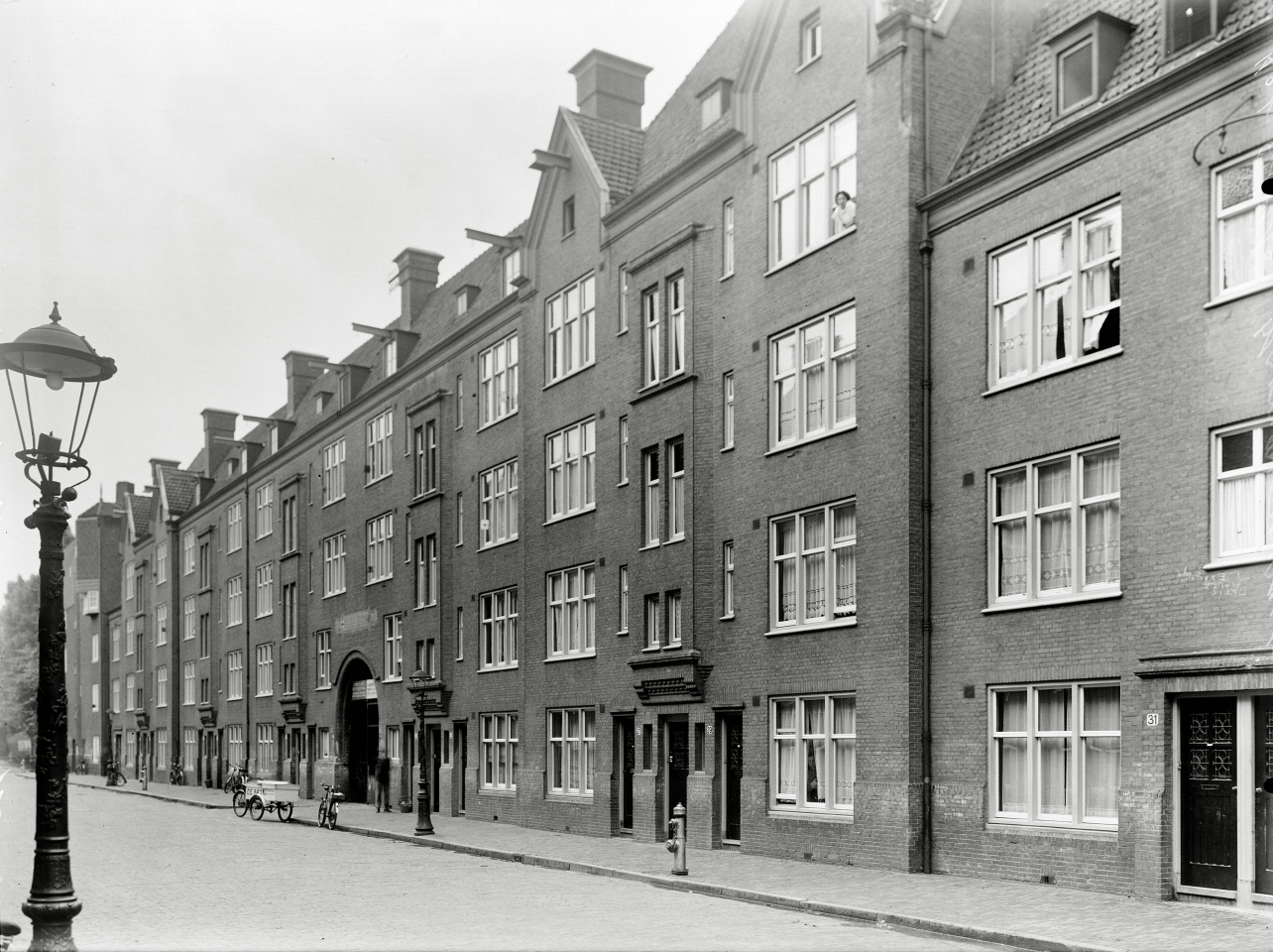
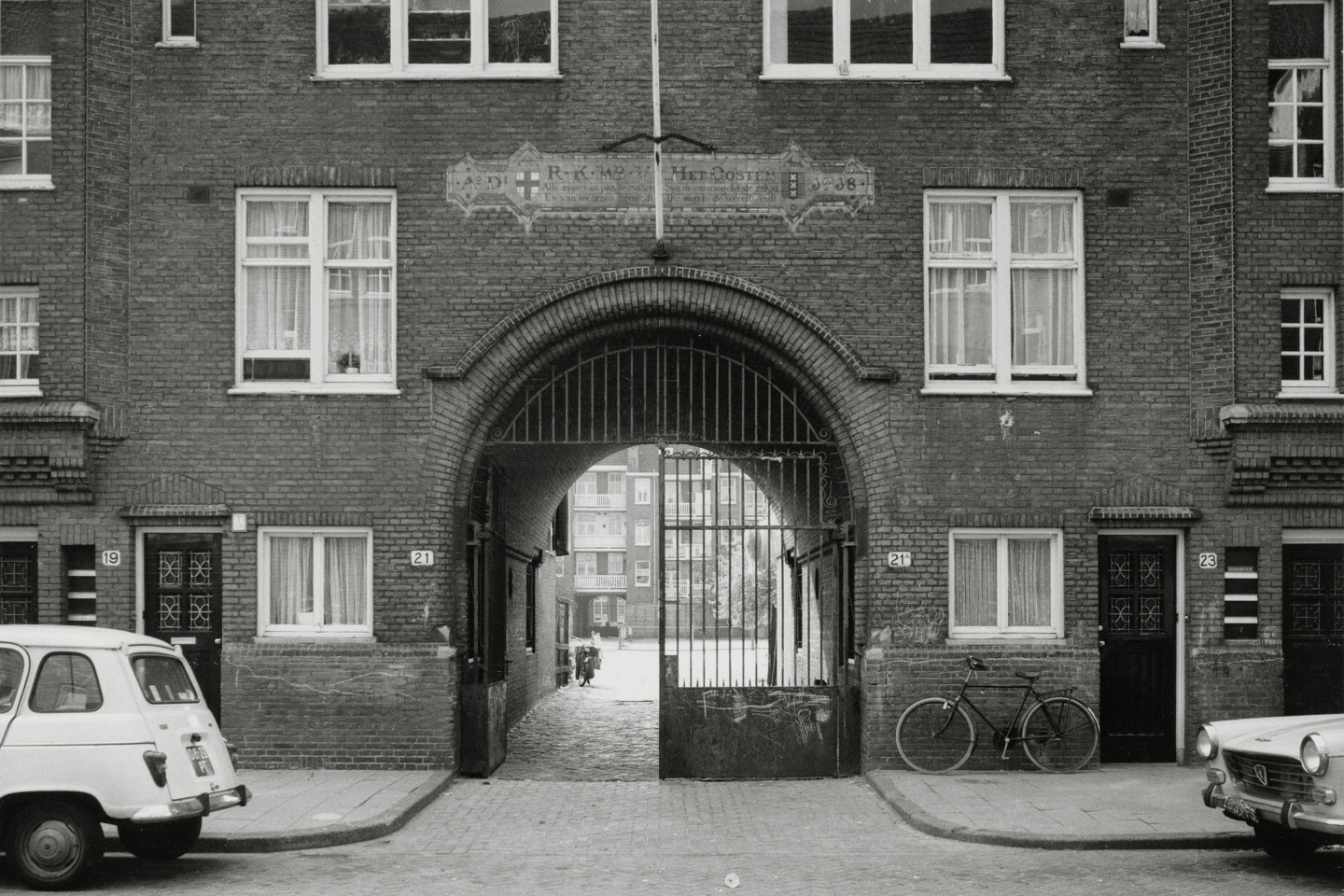
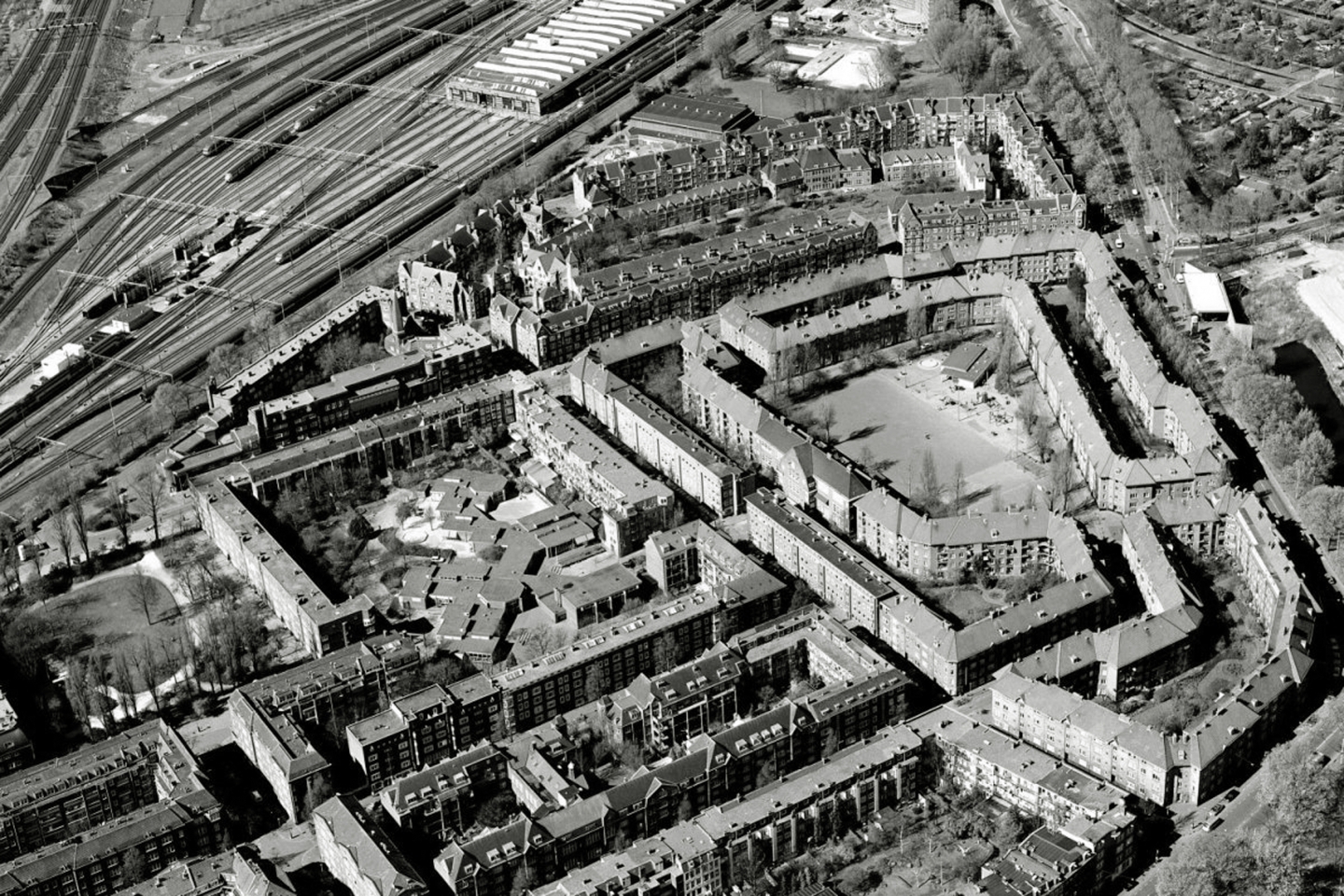
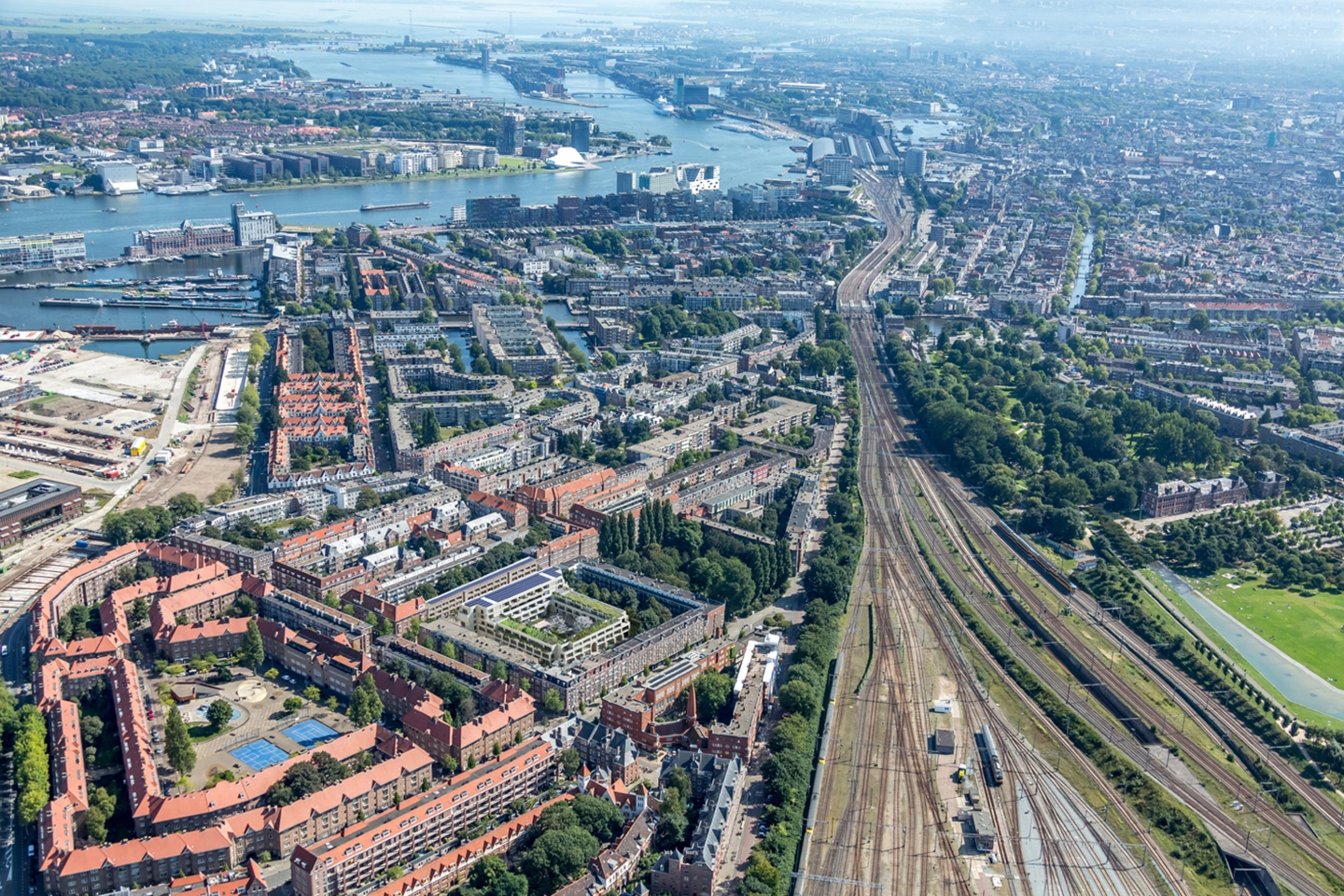
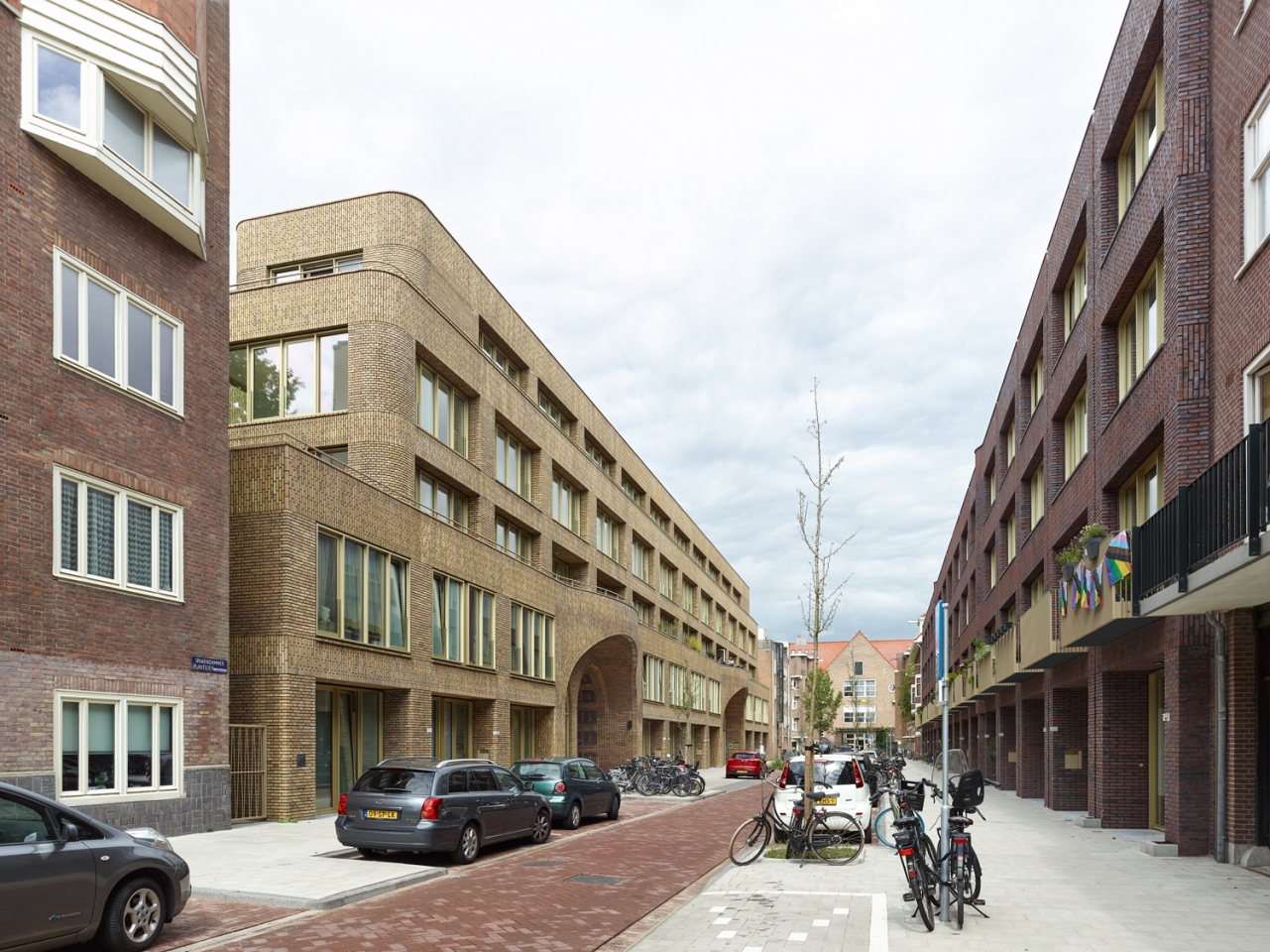
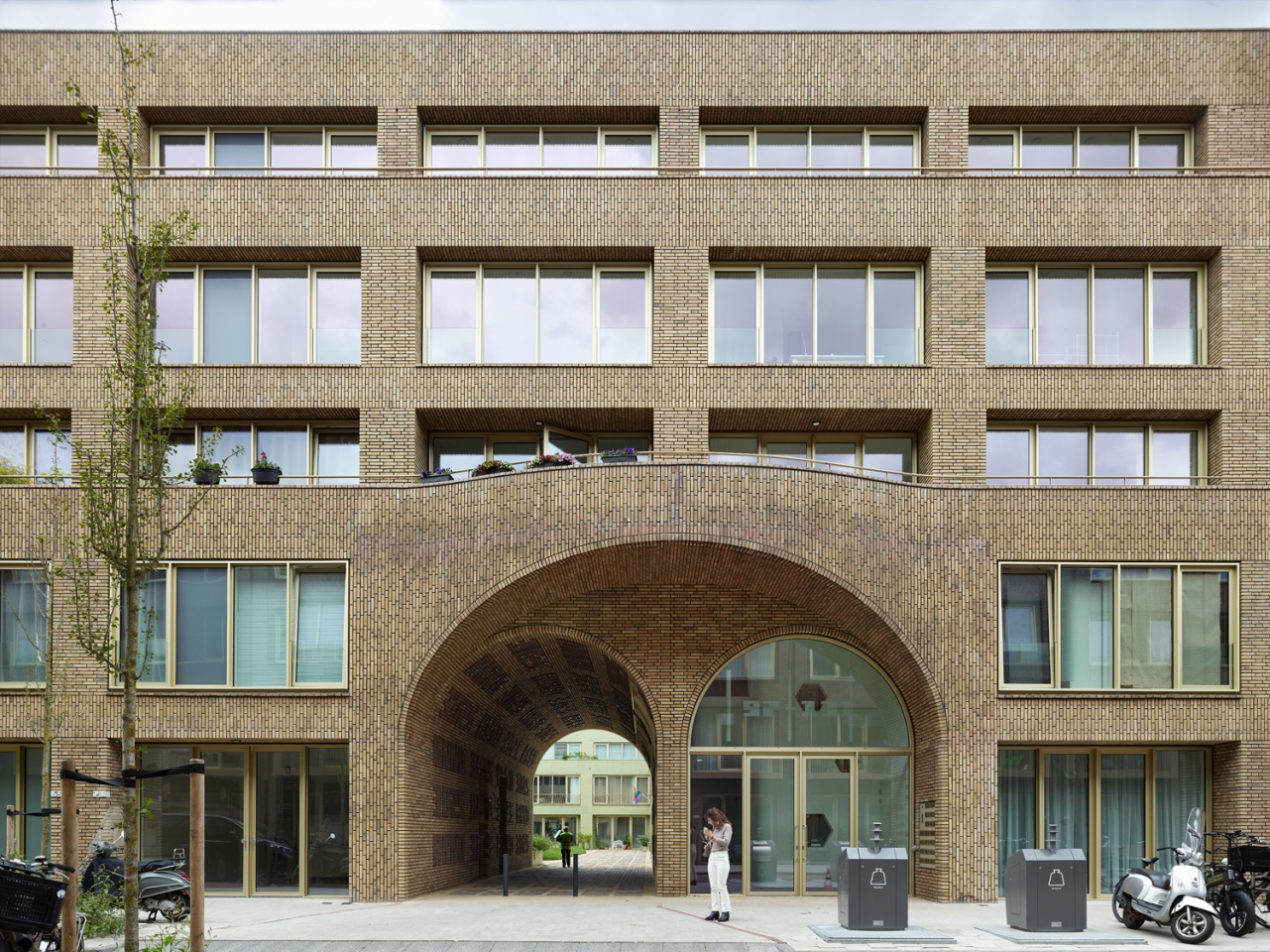
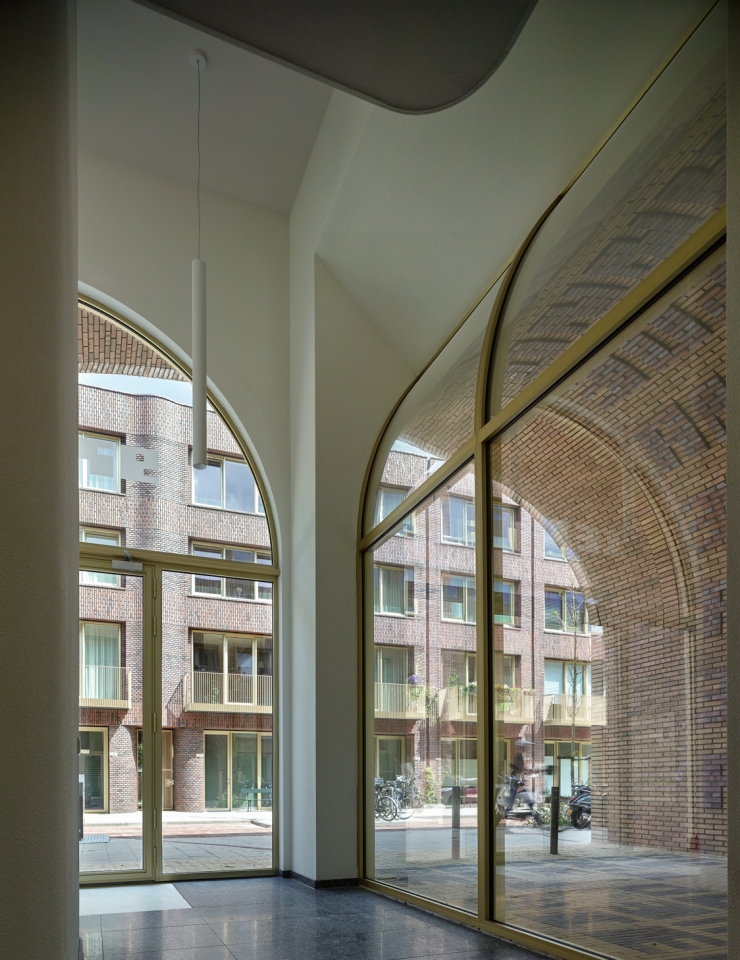
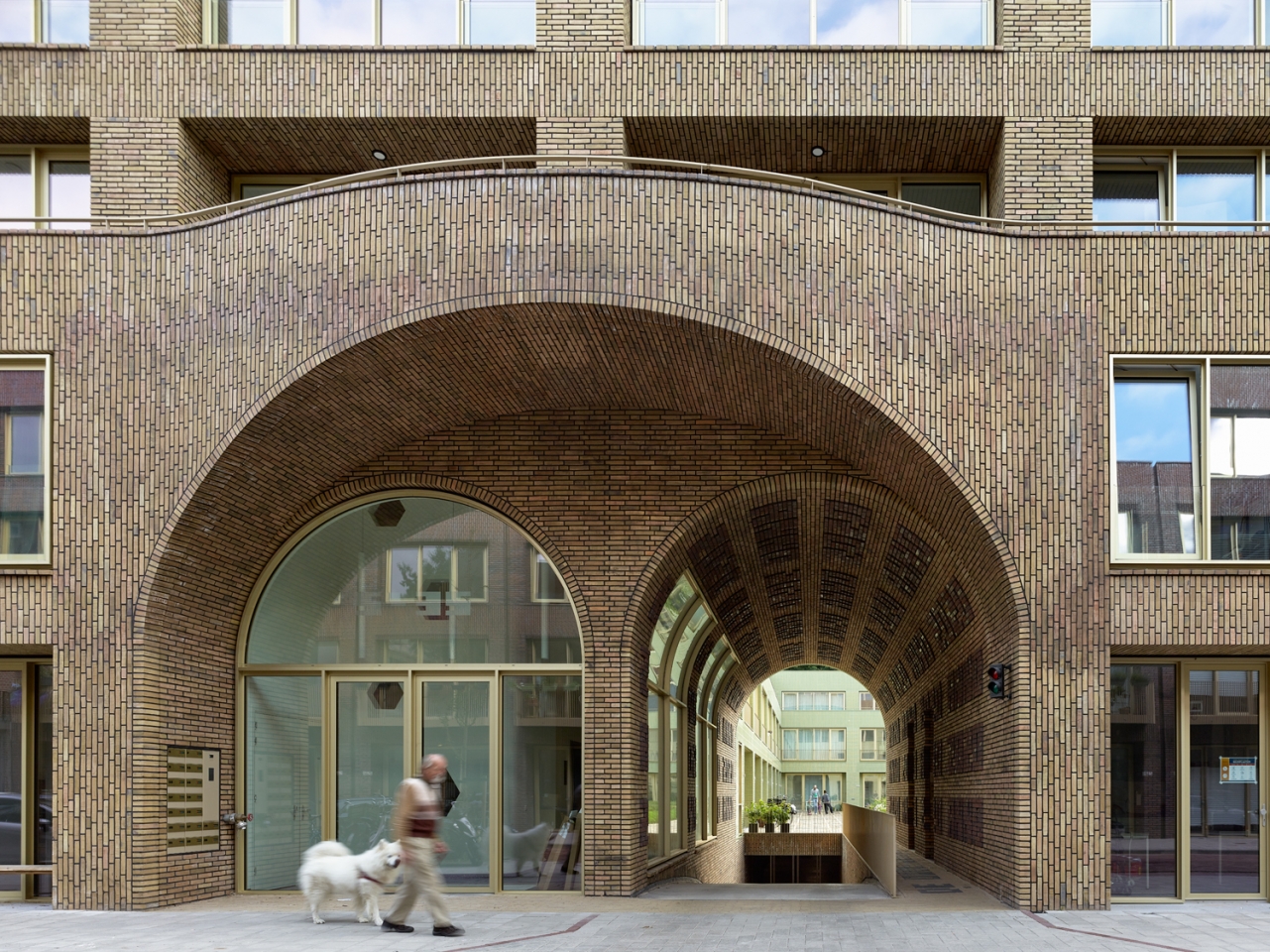
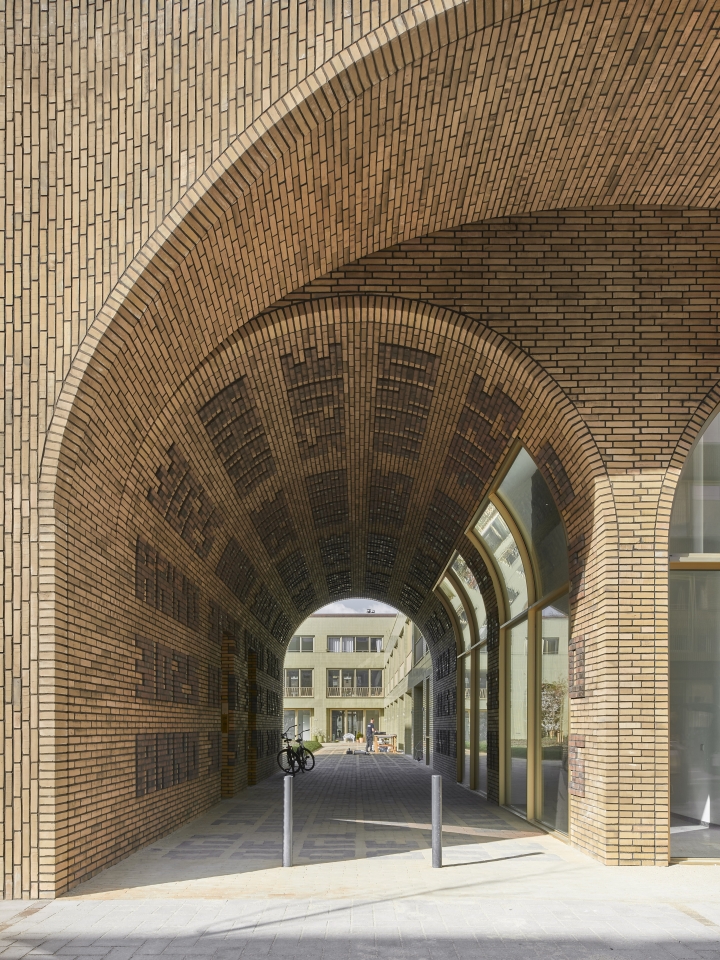
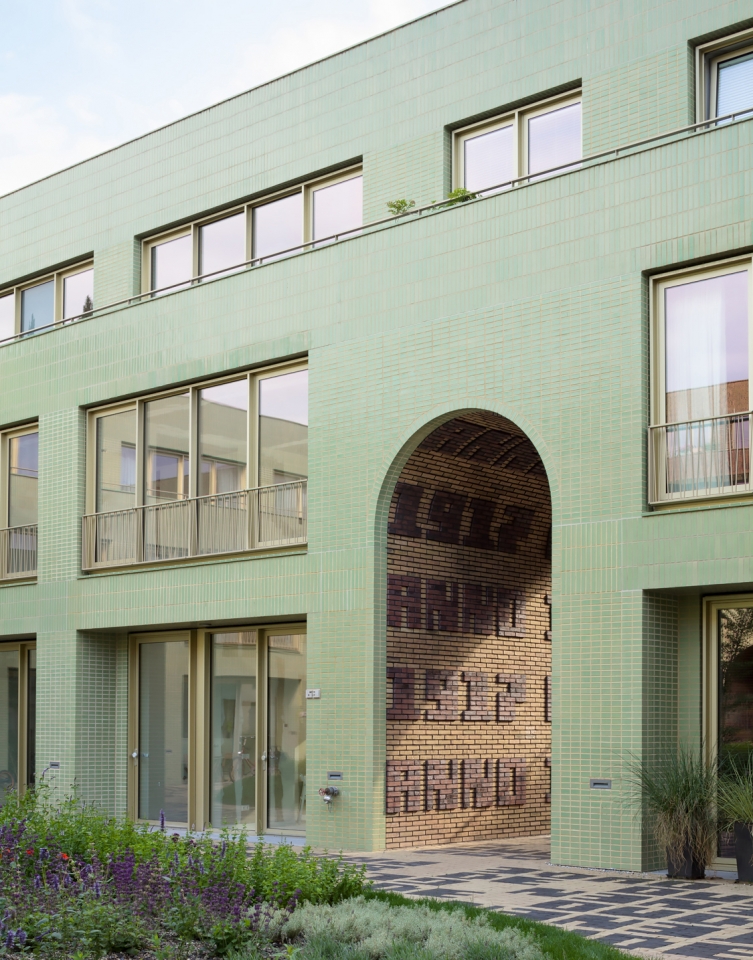
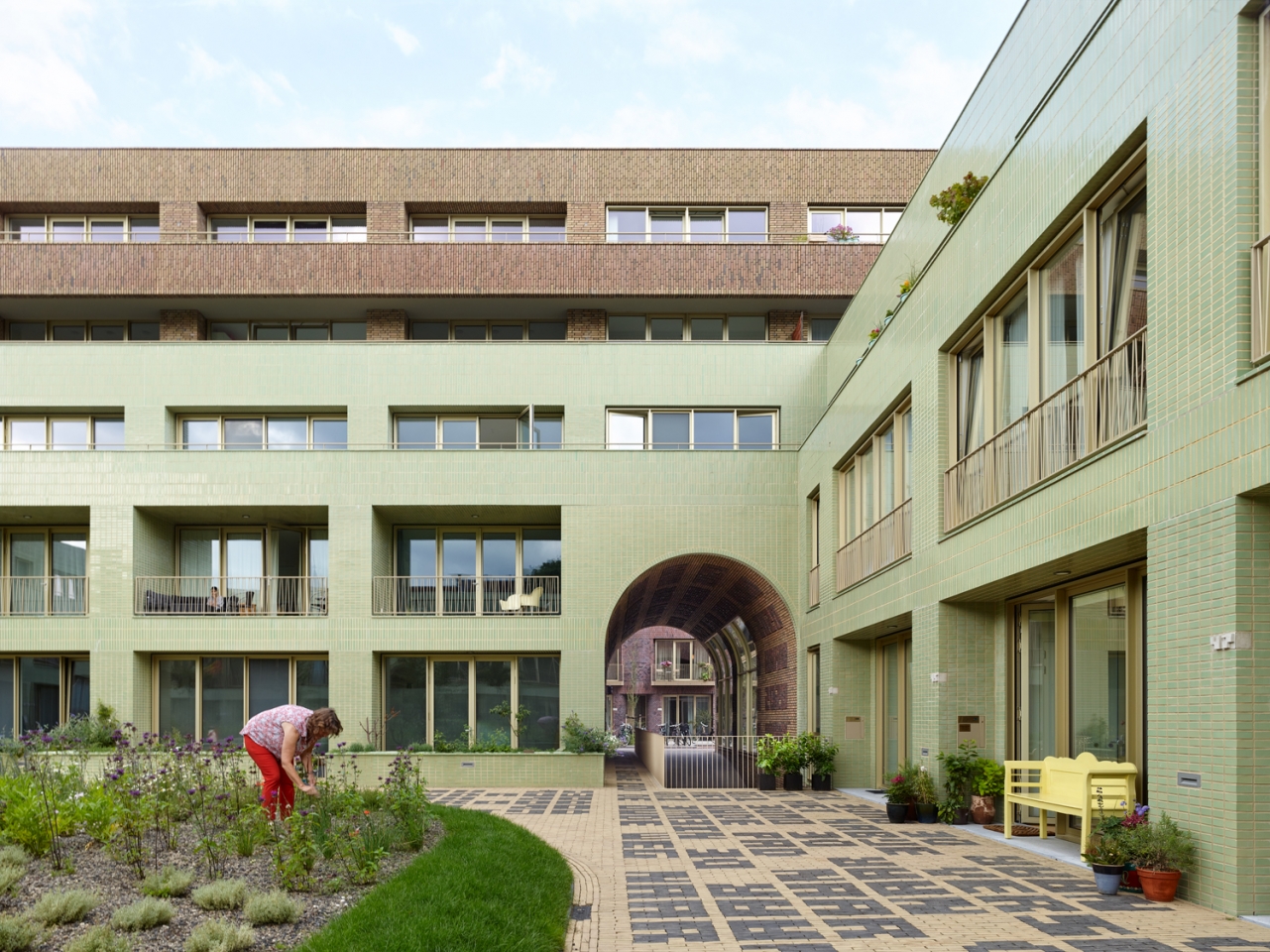
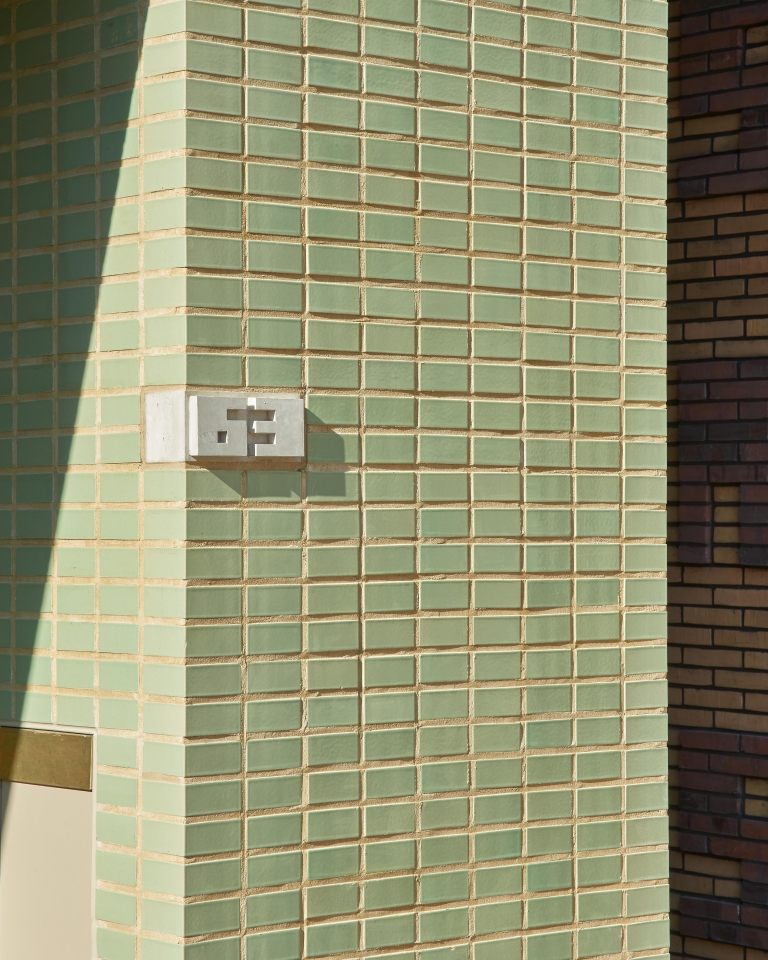
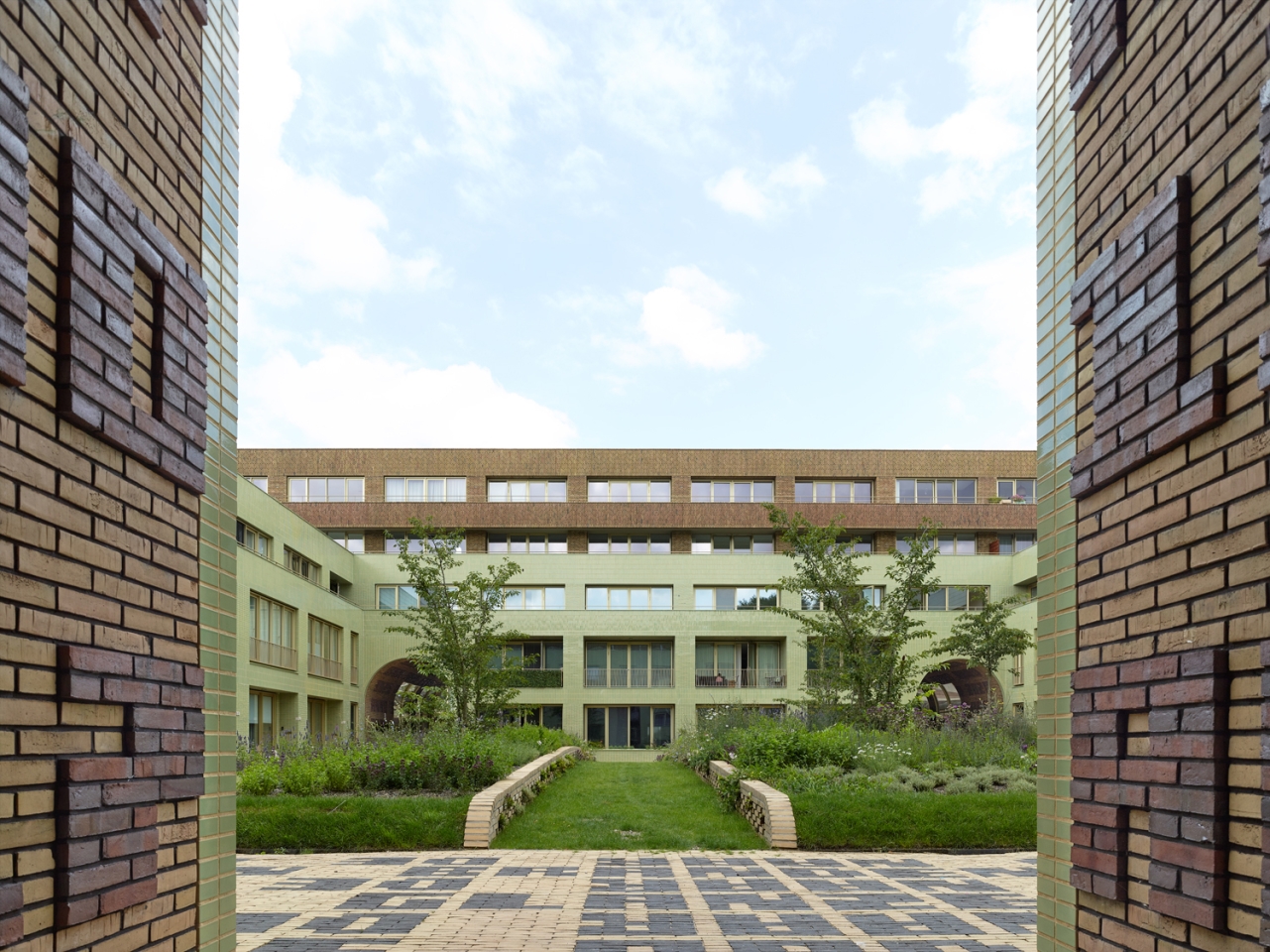
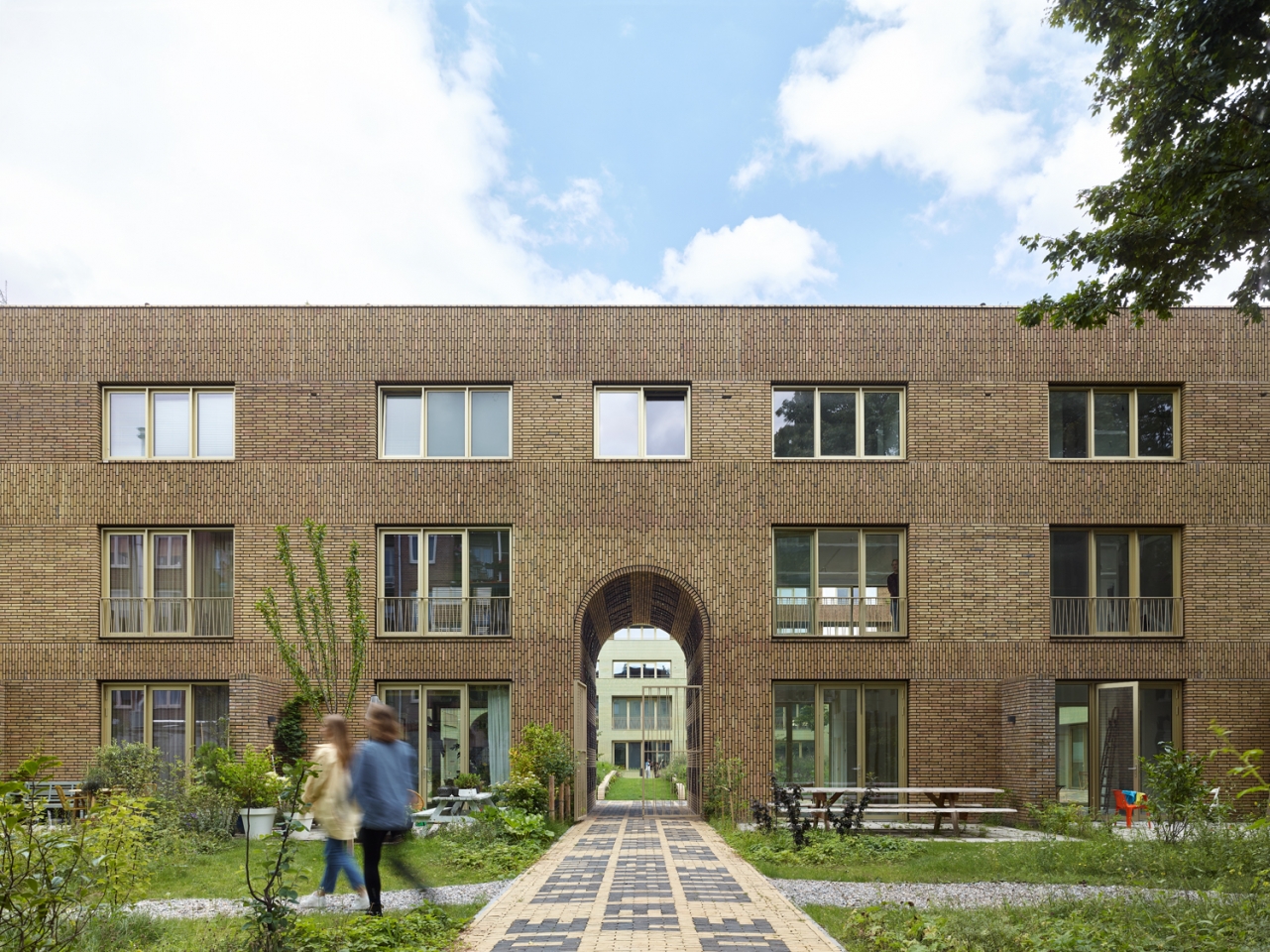
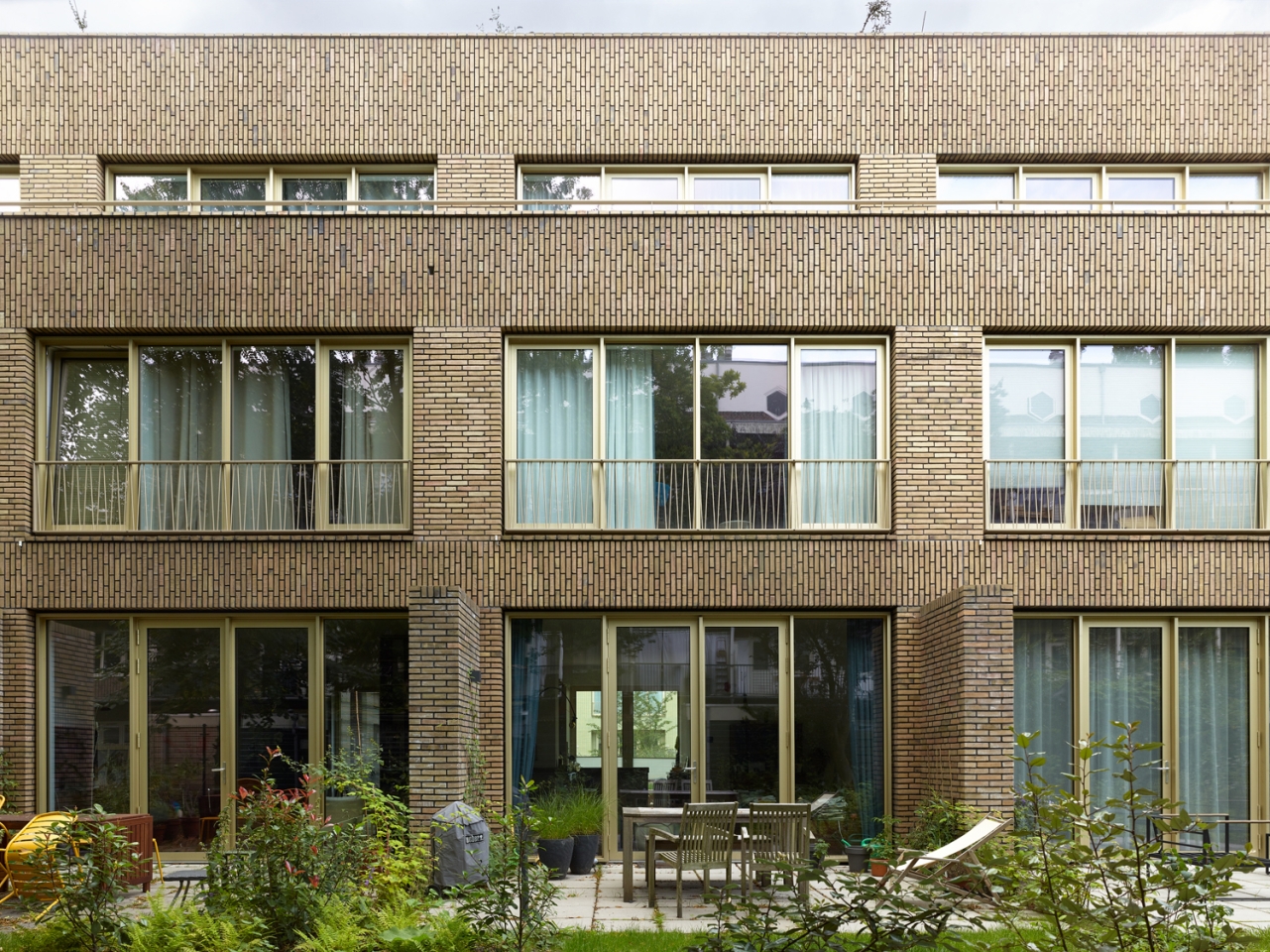
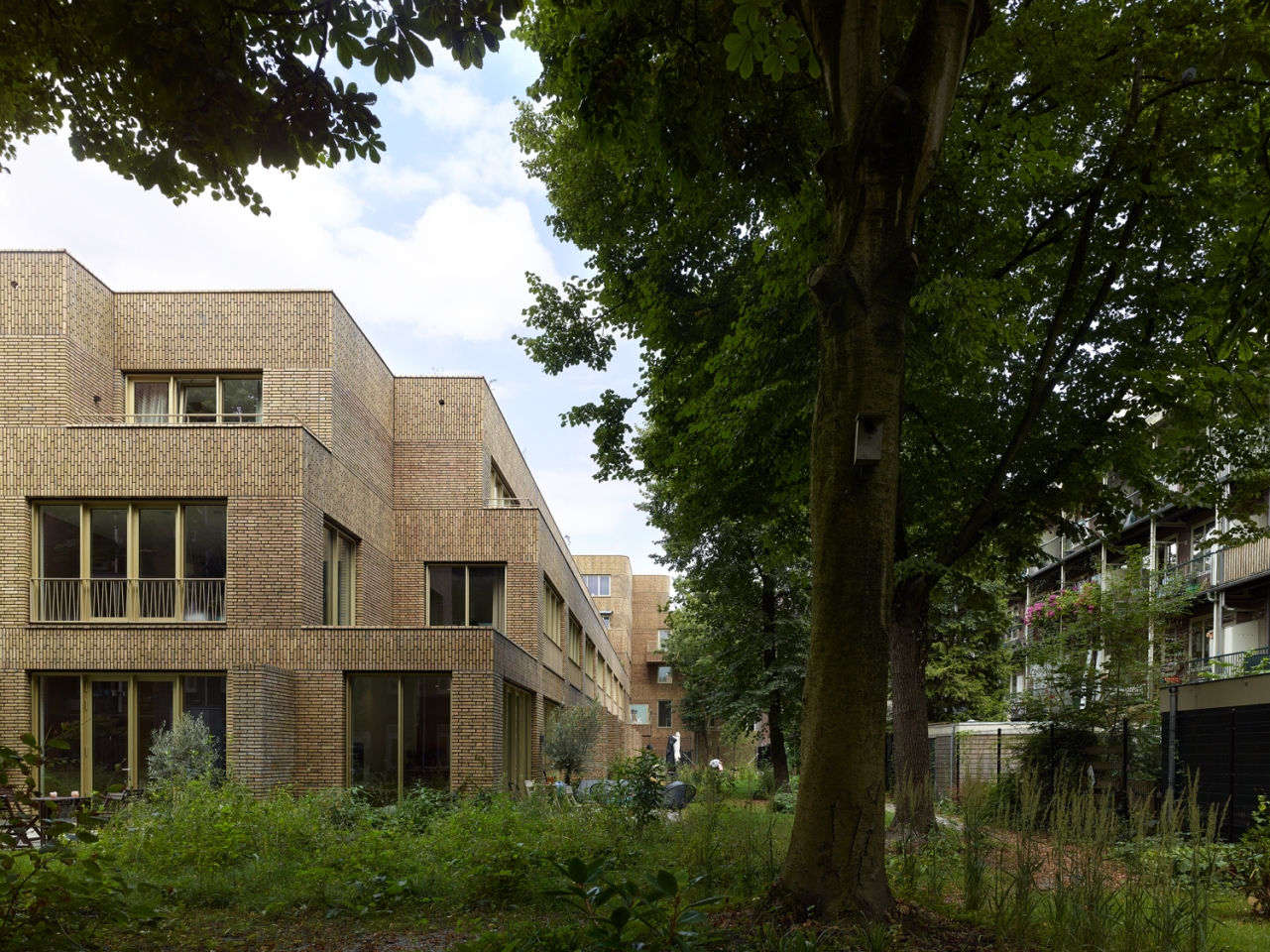
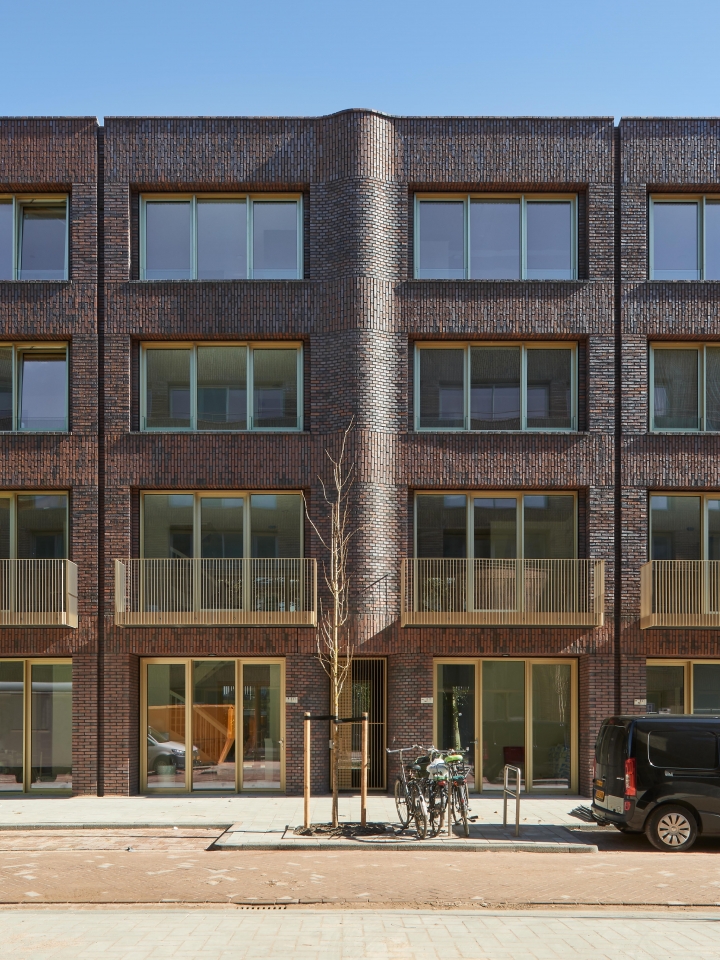
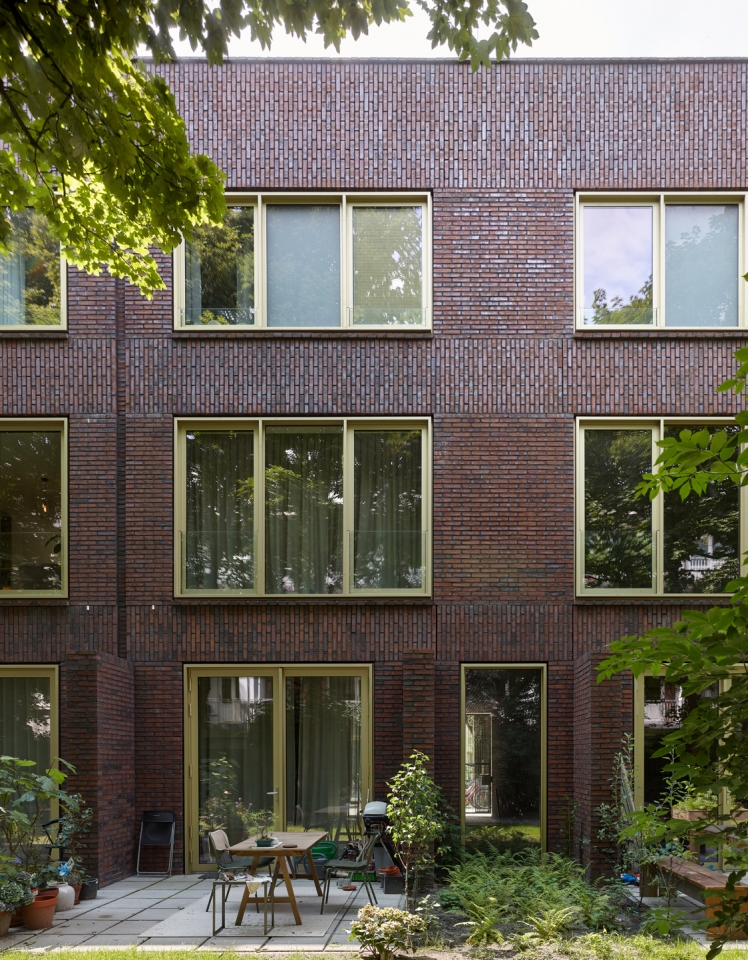
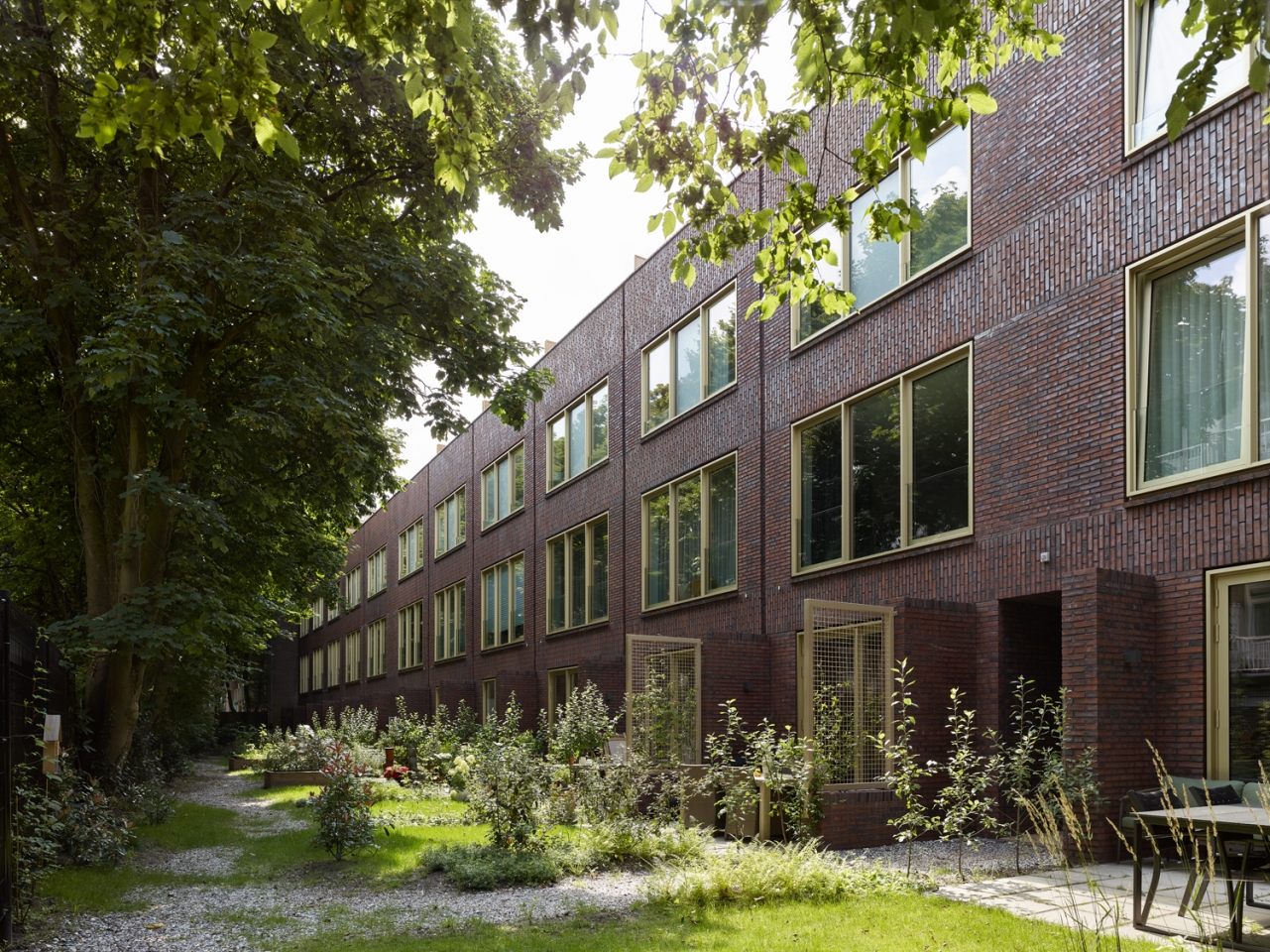
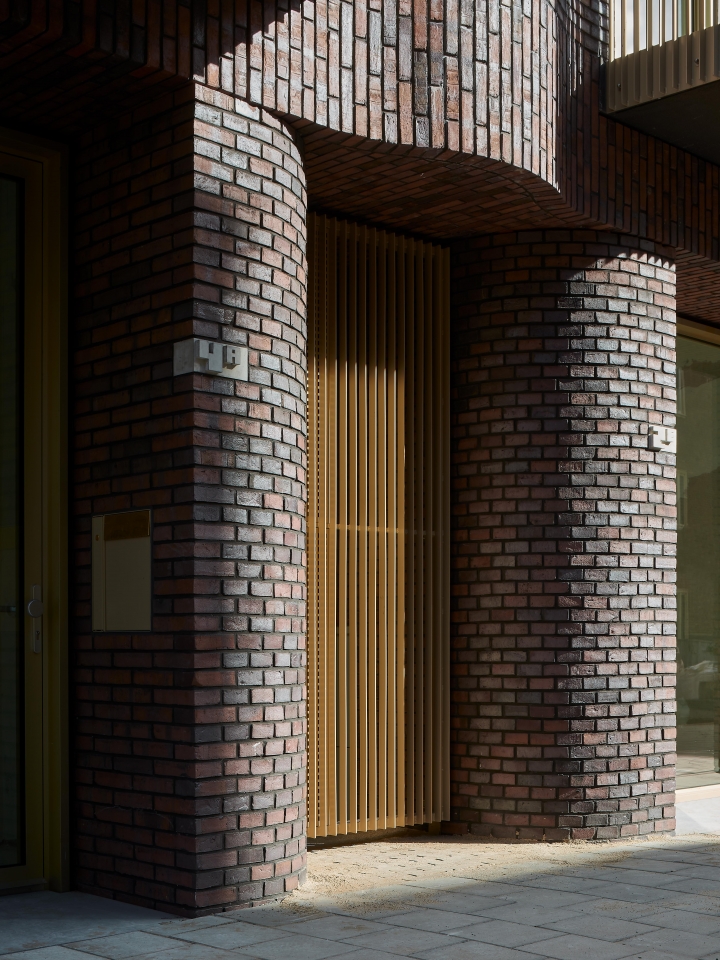
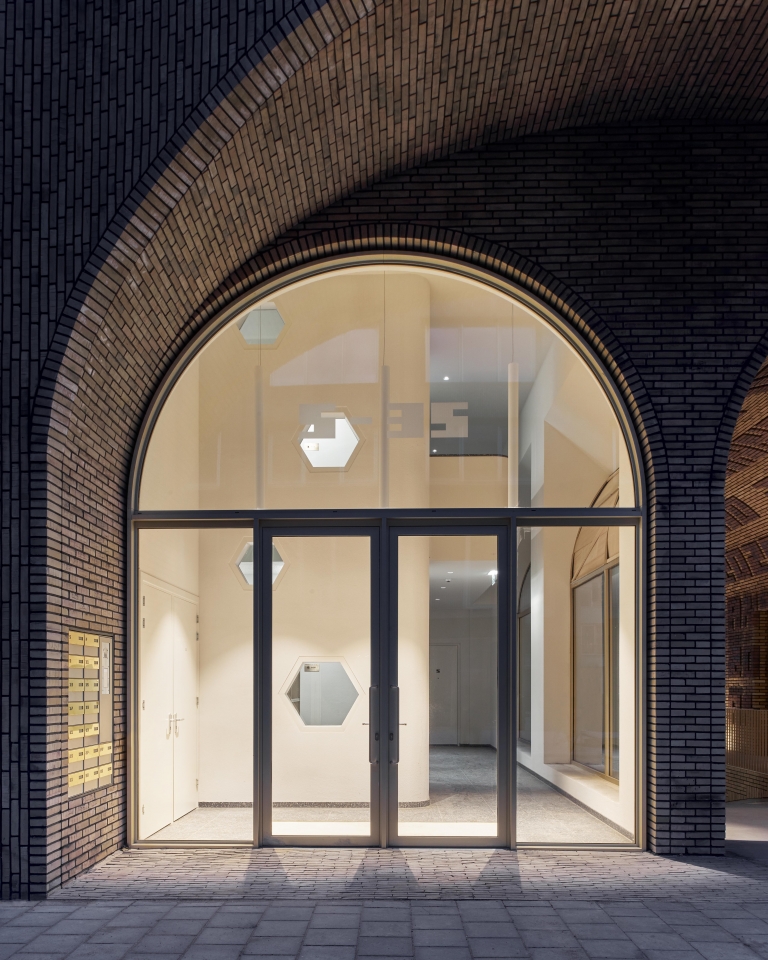
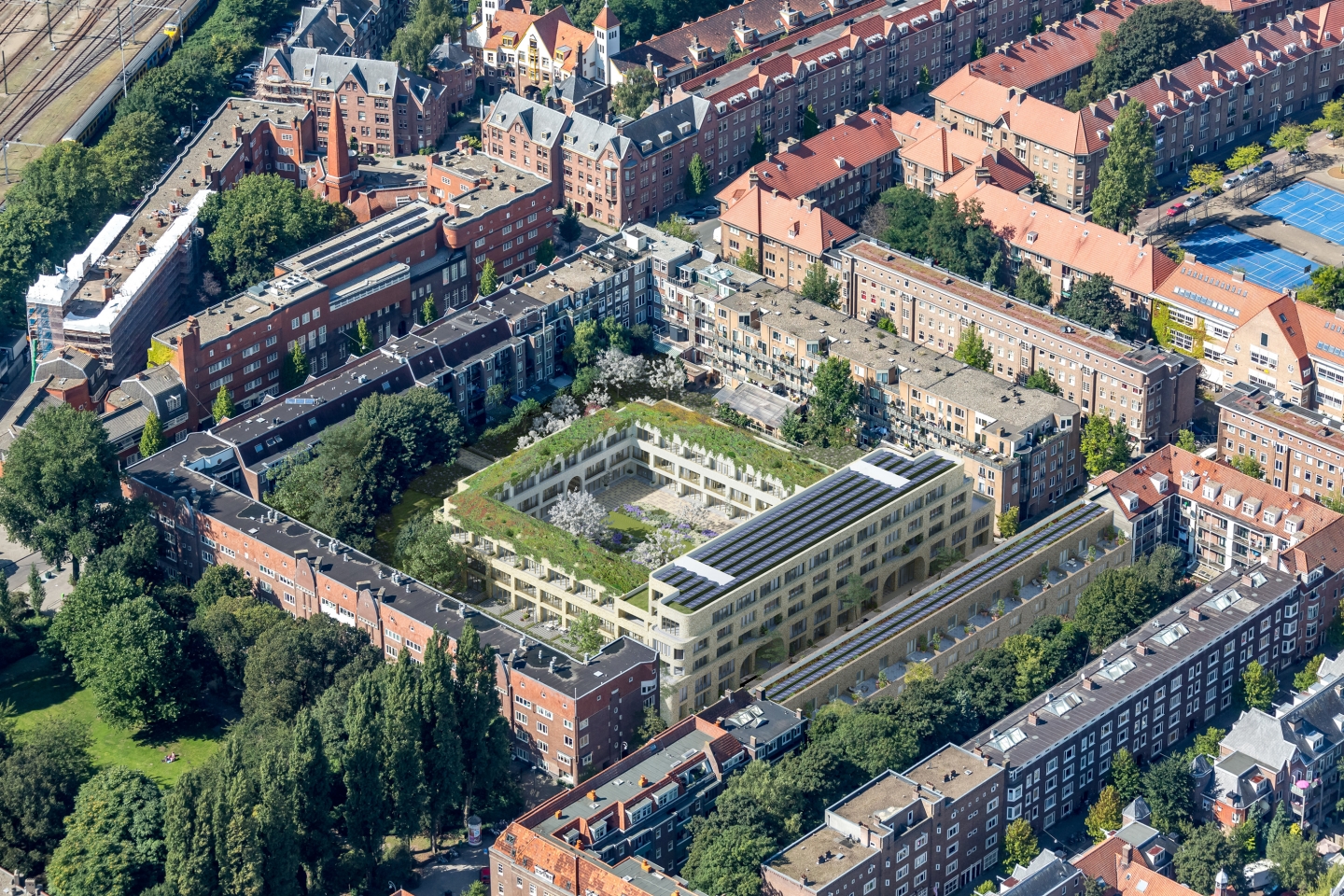
091 / SPAARNDAMMERHART / AMSTERDAM
The Spaarndammerhart – a project in collaboration wit Korth Tielens – restores the urban fabric to the Spaarndammer neighbourhood. The street that disappeared in the 1970s for the construction of the local school, Spaarndammerschool, has been restored. The plan also brings back two street walls and adds a public courtyard to the neighborhood. Accessible through two large gates, it also connects to De Klerk's iconic Het Schip (i.e. The Ship) building. In fact, the neighbourhood is characterized by several world-famous monuments of the Amsterdam School. The project’s location is surrounded by not only De Klerk’s Het Schip and Spaarndammerplantsoen, but also Walenkamp’s Zaanhof and De Bazel’s Zaandammerplein. And while the architecture of Spaarndammerhart is unmistakably contemporary, it also has subtle references to these Amsterdam School classics. For instance, the building features rich and nuanced masonry in red and yellow brick, glazed bricks for the 'interior facades' of the courtyard, slender profile frames in an unambiguous facade structure, and ‘soft’ progressions along the building’s mass. In addition, visual art – in this case by Martijn Sandberg – is an integral part of the larger architecture and landscape design.
In the large block, houses and apartments have been designed in different categories and typologies: including social rental housing for starters, seniors and larger families, rental apartments for the private rental sector, and owner-occupied homes in a communal courtyard. The apartment entrances are located at two gates, which provide access to both the houses and the courtyard. The ramp to the underground parking garage is also located at the southern gate. The balconies above the gates protrude so they clearly mark the entrances from the street. In the gates, the art of Martijn Sandberg depicts the 'connections in time' with the neighbourhood. Two social spaces and a communal area for residents provide space for neighbourhood functions and underline the concept of ‘collectivity’. A 'green cushion' has been laid out in the courtyard following a design by DS Landscape Architects. A collective garden is placed between the existing buildings and the new construction, which is also accessible to the surrounding houses.
The small block consists of ground-level living/working homes in four storeys (owned sector). Characteristic of this block is the vertical articulation per house and the two narrow gates to the rear garden and the underground storage rooms. Here too, the gardens are collective in order to ensure the green character is retained for the long-term. So-called 'encroachment zones' have been applied throughout the project. These are transition zones between the public street and the private home. They consist of a deep recess paved with bluestone. It invites residents to appropriate these places. This fits in with an Amsterdam tradition of having houses oriented towards the street. The residential block comprises a total of 80 homes, including 26 social housing, 18 private sector rental and 36 owner-occupied homes. In addition, there are two community areas, a common room, an underground parking garage for 56 passenger cars and more than 100 facilities for insects, bats and birds.
_
Spaarndammerhart is included in, and featured on the front cover of, the Yearbook Architecture in the Netherlands 2020/2021.
Spaarndammerhart is published in ‘de Architect’ (June 2021), ‘Bauwelt’ (5.2022), ‘Baumeister’ (5.2022) and on Divisare.
Spaarndammerhart is winner of the Amsterdam Zuiderkerk Prize 2021, Abe Bonnema Prize 2021, Amsterdamse Nieuwbouwprijs 2022 and Arie Keppler Prize 2022.
The project was nominated for Dutch Design Awards 2021, ARC21 Award, BNA Best Building of the Year 2022 and the Amsterdam Architecture Prize 2022.
Project data
Apartments and ground-floor houses
Amsterdam
Design–execution
2016–2020
In collaboration with KorthTielens architects
Program
26 social rental homes, 18 private sector rental apartments, 36 private owner-occupied homes, 2 civic spaces, 1 common space, communal gardens, parking
Gross floor area
12.676m2
Project team
Marcel Lok, Sharon Sportel, Chantal Beltman, Carolina Chataignier, Tristen Vreugdenhil, Richard Proudley
Artist
Martijn Sandberg
Landscape architect
DS Landscape Architects
Clients
Heijmans Vastgoed, Housing cooperative Eigen Haard
Contractor
Heijmans Woningbouw
Structural engineer
Bouwadviesbureau Strackee
Building physics advisors
Fore Installatie Adviseurs, Cauberg Huygen
Climate adaptive roofs
Dakdokters
Project address
Krommeniestraat 1 t/m 135 and 2a t/m 4m, Amsterdam
Visualizations
Proloog
Model
Ernst Dullemond
Photography
Max Hart Nibbrig, Dennis De Smet, Tim Stet (model)
